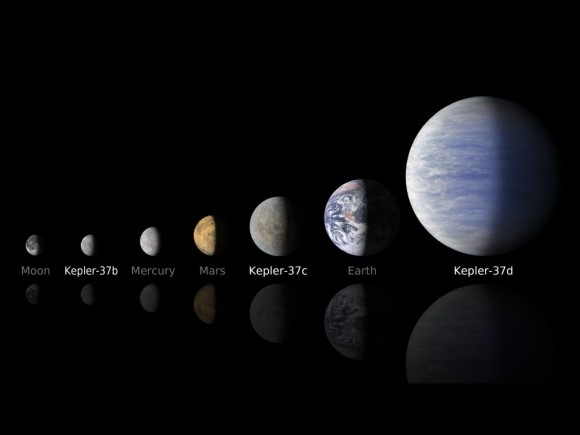

| Visitors Now: | |
| Total Visits: | |
| Total Stories: |

| Story Views | |
| Now: | |
| Last Hour: | |
| Last 24 Hours: | |
| Total: | |
Smallest Exoplanet Yet Discovered by ‘Listening’ to a Sun-like Star

NASA’s Kepler mission has discovered a new planetary system that is home to the smallest planet yet found around a star like our sun, approximately 210 light-years away in the constellation Lyra. Credit: NASA/Ames/JPL-Caltech
Scientists have discovered a new planet orbiting a Sun-like star, and the exoplanet is the smallest yet found in data from the Kepler mission. The planet, Kepler-37b, is smaller than Mercury, but slightly larger than Earth’s Moon. The planet’s discovery came from a collaboration between Kepler scientists and a consortium of international researchers who employ asteroseismology — measuring oscillations in the star’s brightness caused by continuous star-quakes, and turning those tiny variations in the star’s light into sounds.
“That’s basically listening to the star by measuring sound waves,” said Steve Kawaler, from Iowa State University in the US, and a member of the research team. “The bigger the star, the lower the frequency, or ‘pitch’ of its song.”
(…)
Read the rest of Smallest Exoplanet Yet Discovered by ‘Listening’ to a Sun-like Star (838 words)
© nancy for Universe Today, 2013. |
Permalink |
No comment |
Post tags: asteroseismology, Extrasolar Planets, Kepler mission
Feed enhanced by Better Feed from Ozh
2013-02-20 15:16:27
Source:


